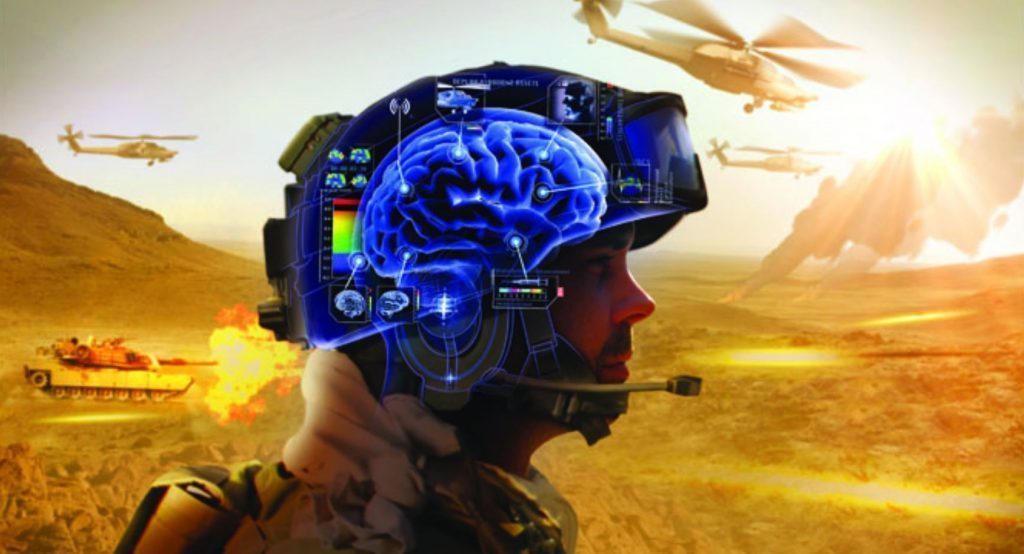 By B.N. Frank
By B.N. Frank
Decades of research has already proven that exposure to radiation from wireless sources – including 5G – is biologically harmful. In fact, last year, a federal court ruled in favor of organizations and petitioners that sued the Federal Communications Commission (FCC) for NOT adequately protecting Americans from wireless radiation exposure. Additionally, in 2019, telecom executives gave congressional testimony that they had NO independent scientific evidence that 5G is safe. Despite the ruling and the congressional testimony, the FCC as well as other federal agencies that are also supposed to protect Americans – including the Department of Defense (DoD) (see 1, 2) – continue to promote and fund the deployment and densification of 5G, 4G, and other wireless infrastructure and devices for widespread use.
In regard to virtual reality (VR), augmented realty (AR) and mixed reality (MR) technologies, they are not exactly the same. However, research has indicated that VR system use can cause behavioral changes, balance problems (see 1, 2), cognitive problems, eye problems (soreness, vision changes), headaches and other discomforts, skin issues, as well as other short-term and/or long-term health issues. AR technolgy does require wearers to wear devices on their heads and over their eyes. That alone could potentially pose some risks to the ground soldiers asked to wear them.
From Defense One:
The Army Is Hunting For More Soldier-Connected Tech
A recent solicitation calls for soldier-centered networking and information technology that will link existing and prototype technologies together.
The Army wants a small business to supply tech that can support and integrate everything from sensors to 5G and augmented reality headsets, in an effort to “optimize the ground soldier’s ability to shoot, move, and communicate.”
The Ground Soldier Technology Workflow, Integration, and eXperience—or GS-TWIX—is an effort to link several technologies through both hardware and software, according to a solicitation notice.
The Army first revealed its intentions earlier this year with a request for information that highlighted six elements, including tech that can optimize sensor data; communications, like with the Nett Warrior program; and other ground-based systems needed for displaying information collected by sensors or other means. Other task elements focus on improving the survivability of these systems if exposed to chemical, biological or nuclear attacks, and the tactical implications of using 5G.
GS-TWIX seems to represent a piece of the Army’s ambition to more intricately connect data to troops and decision makers through improved sensors and networking capabilities. It also specifically calls for integration with the Army’s augmented reality headset, the Integrated Visual Augmentation System, which could indicate longer-term plans as the Army works out the system’s future.
“All applications shall be integrated with the software code base and hardware system for either Nett Warrior or IVAS,” the notice states, adding that the contractor must also supply a technical report on Chemical Biological Radiological and Nuclear Defense integration. IVAS is also mentioned in relation to Ground Soldier Systems Integration and Sensored Soldier.
But a final report on the IVAS’s latest test is still pending—as is a final decision on its future.
Douglas Bush, the Army’s chief buyer, declined to give details on whether the system would be fielded in the coming months, but told reporters last month that there are “still some technology issues with regard to the exact technology in the platform that need further improvement.”
“I think we have a good system, it needs further improvement. There’s also, because this is a wearable technology, there are kind of human factors engineering aspects of how it is on a soldier that we again learned what—good and bad—in terms of what they liked and what they didn’t like and what was, rather than just using the term liked or didn’t like, what was most helpful to them in accomplishing their missions,” Bush said, adding that the service secretary has the final say on whether the system will move forward.
The Army plans to submit the system’s final test reports to Congress by early fall and have a decision on IVAS’s future before then, he said.
Submissions for the proposal are due by Aug. 22.
Activist Post reports regularly about unsafe technology. For more information, visit our archives and the following websites:
- Americans for Responsible Technology
- Electromagnetic Radiation Safety
- Environmental Health Trust
- Physicians for Safe Technology
- Wireless Information Network
Become a Patron!
Or support us at SubscribeStar
Donate cryptocurrency HERE
Subscribe to Activist Post for truth, peace, and freedom news. Follow us on SoMee, Telegram, HIVE, Flote, Minds, MeWe, Twitter, Gab, What Really Happened and GETTR.
Provide, Protect and Profit from what’s coming! Get a free issue of Counter Markets today.


Be the first to comment on "Army Wants “tech that can support and integrate everything from sensors to 5G and augmented reality headsets” for Ground Soldiers"